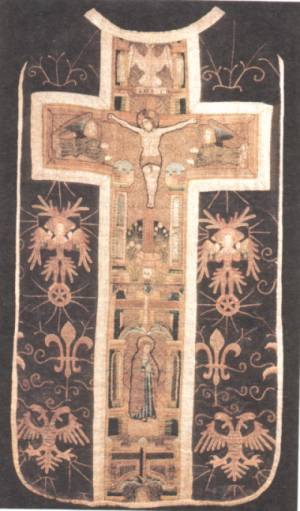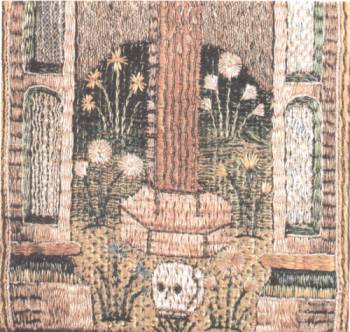As an introduction she points to the importance of the art of embroidery in 13th and 14th c. in England, with its high quality of gold embroidery, and silk embroidery in split stitch. After this high time of embroidery, there was a decline.
The chasuable or Liège originats from the 15th c. and also most of the embroideries are from 15th c. There are many restorations and also alterations in size. On the brown velvet of the ground fabric there are embroidered Seraphimes on wheels, french lilies and the two headed eagles of the germain romain empire. The cross shows Christ with 2 angels and underneath in niches there are the figures of the virgin Mary and John of which only the head is preserved.
The chasuable of Ath shows
a similar arrangement and its embroidery has been
attentively analysed by Mary-Françoise Tillier in:
Broderies liturgiques, dans: Etudes et
documents du Cercle royal d'Histoire et d'Archeéologie
d'Ath et de la région, t.; II, 1980, p. 343-345, fig.
132.
Another chasuable, exhibited at Namurois in the Musée des arts anciens seems to be a mediocre imitation, but all examples of similar chasuables show the success and influence of english embroideries in the 15th c. in Europe.

backside of the chasuable
(copyright Max Burlet, trésor de la Cathédrale de
Liège)
